#ivan kuskov
Text
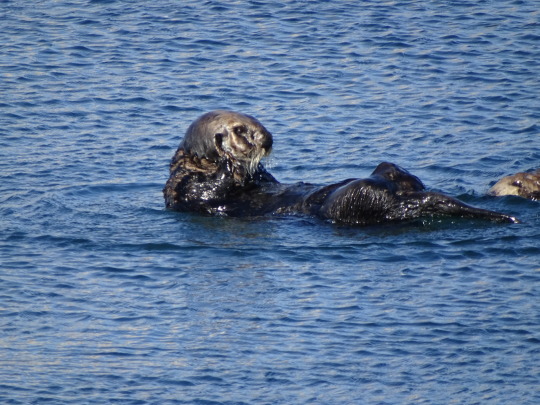
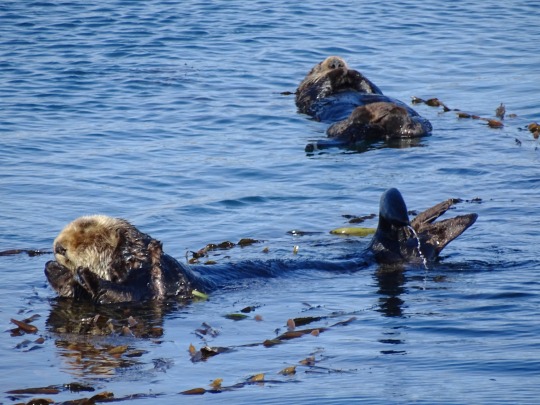



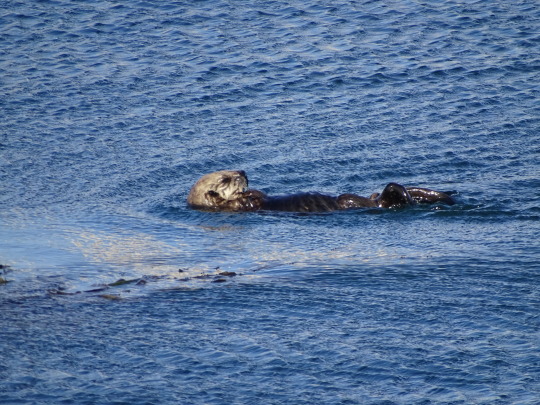
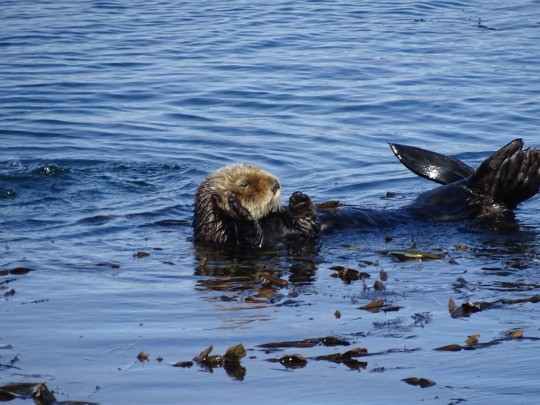
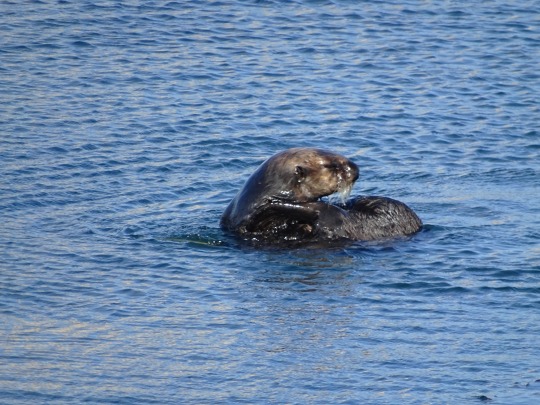
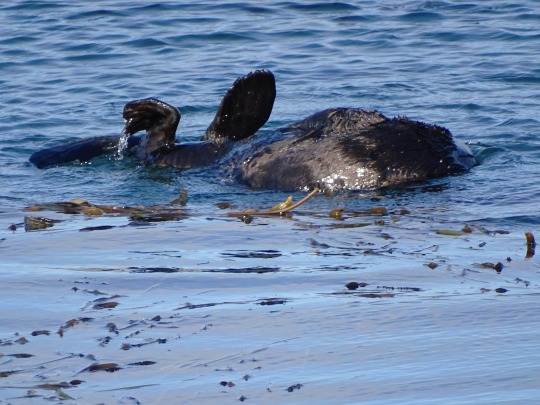


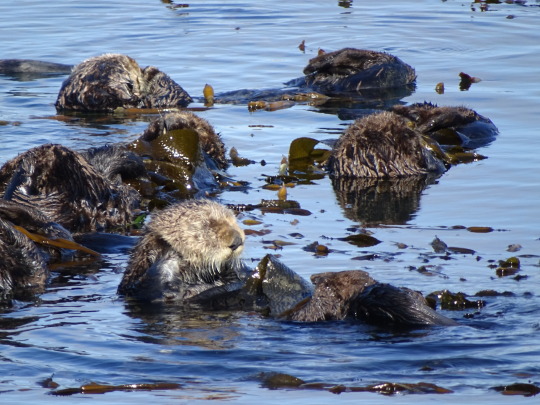
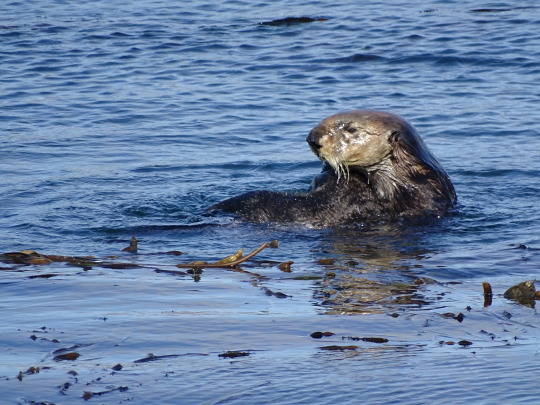
Sea Otter Heaven, Morro Bay (No. 4)
The historic population of California sea otters was estimated at 16,000 before the fur trade decimated the population, leading to their assumed extinction. Today's population of California sea otters are the descendants of a single colony of about 50 sea otters located near Bixby Creek Bridge in March 1938 by Howard G. Sharpe, owner of the nearby Rainbow Lodge on Bixby Bridge in Big Sur. Their principal range has gradually expanded and extends from Pigeon Point in San Mateo County to Santa Barbara County.
Sea otters were once numerous in San Francisco Bay. Historical records revealed the Russian-American Company snuck Aleuts into San Francisco Bay multiple times, despite the Spanish capturing or shooting them while hunting sea otters in the estuaries of San Jose, San Mateo, San Bruno and around Angel Island. The founder of Fort Ross, Ivan Kuskov, finding otters scarce on his second voyage to Bodega Bay in 1812, sent a party of Aleuts to San Francisco Bay, where they met another Russian party and an American party, and caught 1,160 sea otters in three months. By 1817, sea otters in the area were practically eliminated and the Russians sought permission from the Spanish and the Mexican governments to hunt further and further south of San Francisco. In 1833, fur trappers George Nidever and George Yount canoed "along the Petaluma side of [the] Bay, and then proceeded to the San Joaquin River", returning with sea otter, beaver, and river otter pelts. Remnant sea otter populations may have survived in the bay until 1840, when the Rancho Punta de Quentin was granted to Captain John B. R. Cooper, a sea captain from Boston, by Mexican Governor Juan Bautista Alvarado along with a license to hunt sea otters, reportedly then prevalent at the mouth of Corte Madera Creek.
Source: Wikipedia
#Sea Otter Heaven#California sea otter#Enhydra lutris#Morro Bay#hotel#travel#original photography#vacation#tourist attraction#USA#summer 2022#Califorina#West Coast#San Luis Obispo County#wildlife#animal#seaweed#Morro Rock Ecological Preserve#Pacific Ocean#beach#cityscape#landscape#seascape#kelp#fauna#landmark#marine mammal
2 notes
·
View notes
Photo


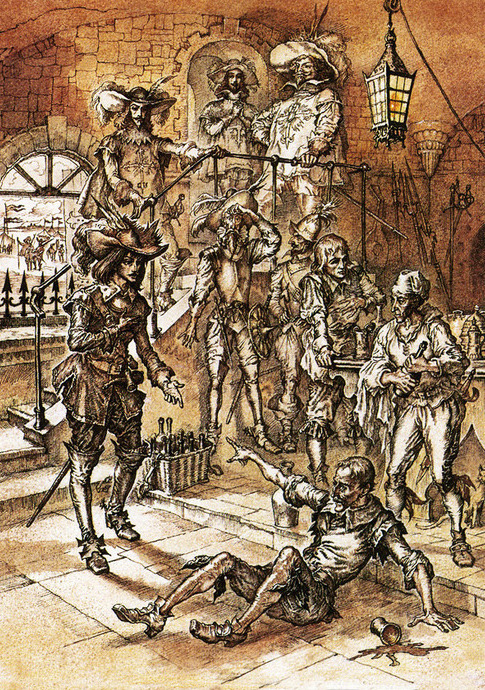
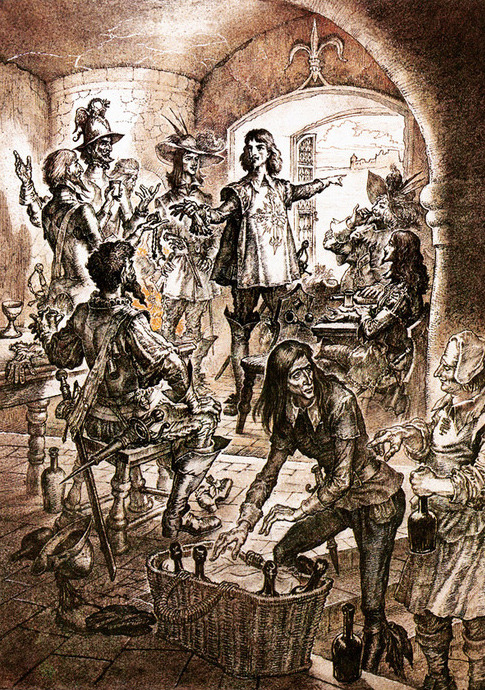
Ivan Kuskov’s illustrations for The Three Musketeers by Alexandre Dumas.
41 notes
·
View notes
Photo

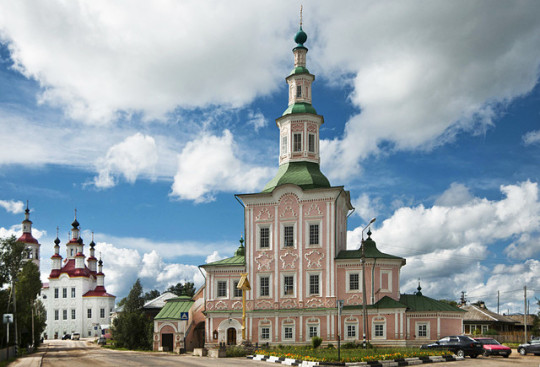

Totma (Vologda Oblast, Russia). The town is located on the left bank of the Sukhona River, where it meets the Pesya Denga.
July 26th is Russian America Day for Totma, and also for Fort Ross in California. The two places celebrate the day by ringing bells together in the churches, with the even broadcast by a video link. This is because Fort Ross was founded in 1812 by Totma native Ivan Kuskov, who led a sea voyage to the shores of western North America in 1808. Since 1990, the house where Kuskov spent his last months has been part of a museum complex, where documents and artifacts relating to the exploration of California can be viewed.
#history#military history#colonialism#russia#usa#vologda oblast#california#totma#fort ross#ivan kuskov
22 notes
·
View notes
Text
My procrastination gets worse and worse so I’m posting the tasty, tasty Ivan Kuskov illustrations!
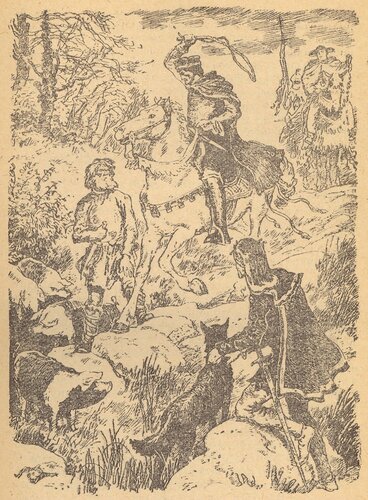

Those are two variations of the same pic but it does not matter because this is the brian that made me go 👀 as a 12yo
(Yes, it’s him being an asshole. It’s not surprising.)
(I blame the cheekbones.)

Ivanhoe has a really weird face here but as far as I’m concerned it’s canon

1) Rowena
2) John
3) I just noticed that Isaac appears to wear a bowler hat


Never underestimate the power of a good illustration to make you imprint on a scene

Does this look kinda weird? Yes. Did I have vaguely shipping feelings about Richard and de Bracy based solely on this picture? Also yes.
13 notes
·
View notes
Note
Ivan Kuskov has to answer for his crimes of 1) making me like brian de bois-guilbert from ivanhoe just with 2 illustrations, and 2) drawing athos Like That.
1) I have ah... a complicated relationship with Ivanhoe (no I don’t, I actually just hate that book but I suspect the Russian version was VERY ABRIDGED and possibly adapted as well as translated and I read it in the original Sir Walter Scott-ian version), but if you’re just gonna be like that, you have to show me the allegedly hot drawing!
2) Drawing Athos Like That is a crime against nature - but also what was he supposed to do? Alex went ON AND ON for PAGES about how BEAUTIFUL and NOBLE and CHIN OF BRUTUS and HANDS OF TITIAN PAINTINGS and BLAH BLAH ALL THE WOMEN WANT AND MEN ALSO WANT AND ALSO WANT TO BE. What was Ivan Kuskov to do, I ask you????
3 notes
·
View notes
Text
Телеканал Культура: Иван Кусков. «Пешком. Другое дело» // Эфир от 17.10.21 @Телеканал Культура
🇷🇺СМОТРИМ «РОССИЯ. НАМ 30 ЛЕТ! САМАРА. ДОЧЬ ОРЕНБУРГСКИХ СТЕПЕЙ»👉 https://youtu.be/3wGDvrQcazY 🔥 СМОТРИМ ВСЕ СЕРИИ ДЕТЕКТИВА «МЕДИУМ» ПРЯМО СЕЙЧАС👉https://smotrim.ru/video/2345436/?utm_source=youtube&utm_medium=all&utm_campaign=all_0 🔥 СМОТРИМ МИСТИЧЕСКИЙ СЕРИАЛ «ТАЙНА ЛИЛИТ» В ОТЛИЧНОМ КАЧЕСТВЕ ТУТ👉 https://smotrim.ru/video/2346102/?utm_source=youtube&utm_medium=all&utm_campaign=all_0 🇷🇺 СМОТРИМ! «РОССИЯ. НАМ 30 ЛЕТ! АЛТАЙ. ГЕРОЙ НАШЕГО ВРЕМЕНИ» 👉 https://youtu.be/JLE2NXeBnL0 🇷🇺 СМОТРИМ УНИКАЛЬНЫЙ ФИЛЬМ «РОССИЯ. НАМ 30 ЛЕТ! Дальнобойщица Катя» 👉https://youtu.be/EJw9VA4A4uA 🇷🇺 СМОТРИМ УНИКАЛЬНЫЙ …
Читать далее «Телеканал Культура: Иван Кусков. «Пешком. Другое дело» // Эфир от 17.10.21 @Телеканал Культура»
Сообщение Телеканал Культура: Иван Кусков. «Пешком. Другое дело» // Эфир от 17.10.21 @Телеканал Культура появились сначала на Деловидение.
https://delovidenie.com/telekanal-kultura-ivan-kuskov-peshkom-drugoe-delo-efir-ot-17-10-21-telekanal-kultura/
0 notes
Text
Summer dreams dry up on the Russian River, a paradise whipsawed by drought, flood and fire
New Post has been published on https://tattlepress.com/latest/summer-dreams-dry-up-on-the-russian-river-a-paradise-whipsawed-by-drought-flood-and-fire/
Summer dreams dry up on the Russian River, a paradise whipsawed by drought, flood and fire


The Russian River, just north of drought-stricken Lake Mendocino in Ukiah, Calif. (Brian van der Brug / Los Angeles Times)
If there was any respite to be found, it was here on the Russian River.
A river otter popped up next to Larry Laba’s inflatable canoe, then dived down with a plop. A yellow swallowtail butterfly, big as a hand, fluttered past.
Yet everywhere were signs of the West’s ever-intensifying drought, with the Russian River taking the early hit.
Laba, the owner of Russian River Adventures, who had paddled this river hundreds of times over 20 years, made note of unfamiliar things that made him uneasy.
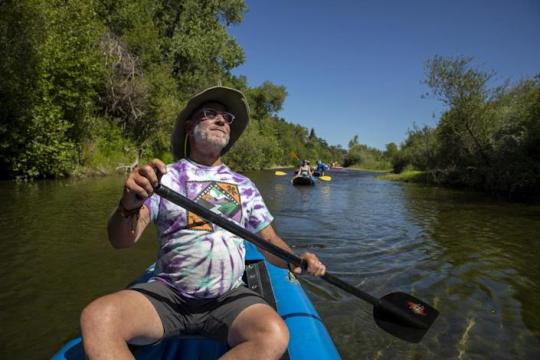

Larry Laba, owner of Russian River Adventures, paddles down the Russian River in Healdsburg, Calif. (Brian van der Brug / Los Angeles Times)
The river was at a historic low. A hot wind blew through the canyon, when summer breezes here are usually gentle and cool. The leaves of the cottonwood trees made a brittle, crackling sound. The same trees, way up high, had cracked branches from a devastating flood in 2019.
Just below the water’s surface, Laba noted colonies of an algae he’d never seen. Then there was his worry over algae he couldn’t yet see. In 2015, during a terrible drought, his dog Indy — whom he described as a dumb, happy-go-lucky retriever no one could resist — died of a seizure on the river. The next week, a 2-year old golden retriever died on one of the trips run by Laba’s company. This time officials pinpointed the cause as a fast-acting neurotoxin from blue-green algae. The algae occurs naturally, but when temperatures rise and water is warm and stagnant, it blooms and releases poisons.
The Russian River area holds a panoply of California treasures: majestic redwoods, ocean mists, summer sun, famed wineries, breweries and a casual, come-as-you-are culture that mixes high-brow with hippie and a bit of barn party.
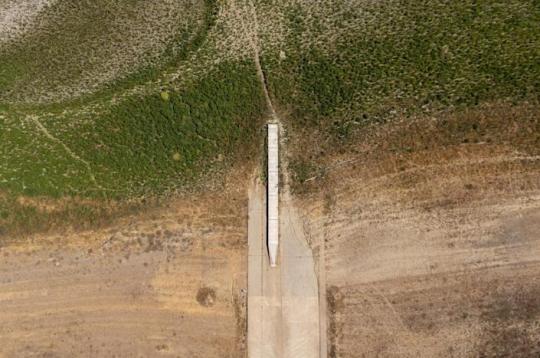

Receding water levels forced a closure of the north boat ramp at Lake Mendocino in Ukiah, Calif. (Brian van der Brug / Los Angeles Times)
It also sits at the center of climate-related disasters. After the drought, which ended in 2017, came fires that burned across eight Northern California counties, killing 23 people. In late February 2019, at the tail end of the wet season, rain pelted down without halt. Some of the area’s mountains saw 400% more than the average amount of rain for the month. The river flooded, cresting at 45-feet, the highest in more than two decades. The river valley towns of Guerneville and Monte Rio became islands, with automobile parts and pieces of buildings floating past. Restaurants that sat on cliffs 30 feet above the river were under water.
Story continues
In August 2020, walls of fire surrounded those same towns as more than 12,000 residents evacuated through smoke and ash. Vineyards burned and beloved cabins turned to tinder. Up and down the West Coast, fires raged, sparked by a combination of extreme heat and a lightning siege. For weeks, this valley — which usually has air so fresh that you can taste the ocean — registered some of the worst air quality in the world.
Laba said he avoids thinking about what all of it — drought, fires, floods, lightning sieges, heat waves — means.
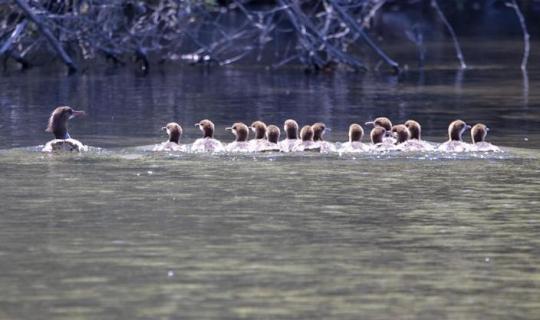

Merganser ducks on the Russian River in Healdsburg, Calif. (Brian van der Brug / Los Angeles Times)
“Look, I can’t go there,” said the 69-year old. “I’m not a worrier. I can’t lay awake at night thinking about climate change. I look around and if there is something I can do —even if I know it won’t make that much of a difference — I do it.”
He spotted tall stalks of scarlet wisteria on the banks, flashing their bright flowers. He beached the canoe.
“They’re huge water-suckers. They’re invasive,” he said, trying to pull up a plant that showed no signs of budging. But Laba pulled and strained until it came up by the roots and couldn’t produce pods to scatter seeds.


Michele Wimborough, left, owner of Hazel restaurant in Occidental, Calif., chats with guests Rahna Schiff, right, and Keith Holamon. (Brian van der Brug / Los Angeles Times)
That evening, farther down river, in the small community of Occidental, off Bohemian Highway, Michele Wimborough stepped outside of a cozy restaurant that was as much a dream as a business.
She and her chef-husband Jim, former Bay Area residents, had searched for years for just the right small town where they wanted to live and raise their son. They opened Hazel, named after Jim’s grandmother, in 2015.
This night was one of their first with in-house dining since before the COVID-19 pandemic, and the restaurant was packed. Earlier, Wimborough had wondered if she’d miss when it was just her family inside, alone, making to-go meals. But she had found herself laughing and happy to be in a crowd.
Now, after the dinner rush, she stood outside, tipped up her face and breathed in a cool mist that was slowly enveloping the town.
Part of the reason was that it gets hot running around a restaurant, but the other was that such moisture was becoming rare.
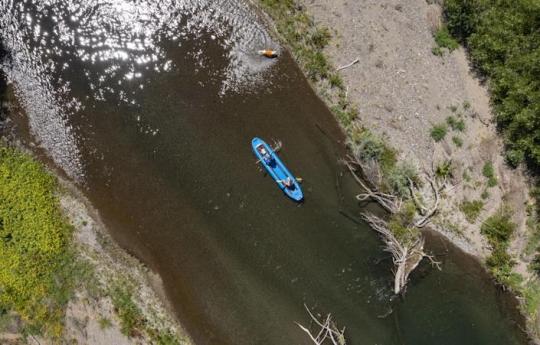

A canoe floats past an exposed gravel bar, right, on the Russian River in Healdsburg, Calif. (Brian van der Brug / Los Angeles Times)
She had been caught off guard by notices pleading with residents to cut water use by 20% to 40% and the news of an emergency water regulation that cut river water rights for up to 2,300 wineries and farms. The restrictions were aimed at keeping the Lake Mendocino reservoir from going dry before summer’s end. Similar cuts are expected soon in California’s other watersheds.
While she was preoccupied with COVID-19, the drought had sneaked up on her.
“I feel like so much has happened that I can’t keep track of it all,” she said.
Just in her tight circle of friends, five families had moved away, people who had planned to stay forever, driven out by fear of disaster.
Wimborough said that by nature she is anxious. But that had changed over the last five years. Now, she steadfastly clings to a stubborn optimism.
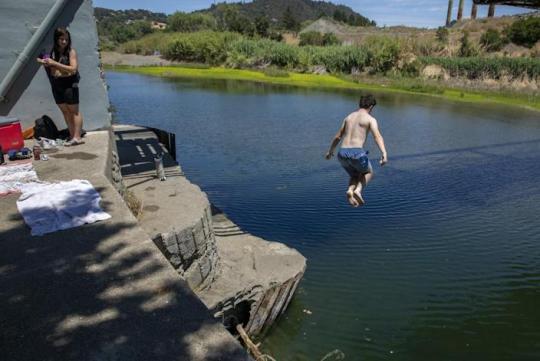

Joseph Lustenberger, 15, jumps off a railroad bridge footing into the Russian River in Healdsburg, Calif. (Brian van der Brug / Los Angeles Times)
“I definitely believe in climate change. But I concentrate on ‘We’re going to keep going and it’s going to be OK’ — until it’s not,” she said.
“I love it here and this is a beautiful moment and I’m grateful we were safe for one more day.”
The Russian River begins in the mountains north of Ukiah in Mendocino County and cuts a winding path to the Pacific Ocean. The Pomo Indians once trapped salmon in its pools, before water was diverted. The river gets its modern name from Russian Ivan Kuskov of the Russian-American Company, who explored it in the early 19th century and founded Ft. Ross. It was the Russians who first planted grapes in the wine region.
Outside of Sebastopol, not far from the sea but worlds away from bustle, or even cell service, Eric Susswell, owner of Radio-Coteau, makes wines that he said are meant to capture place and a particular moment in time.
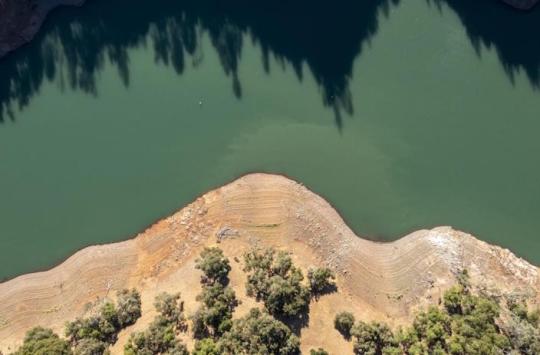

Land once underwater is exposed by receding water levels on Lake Sonoma in Geyserville, Calif. (Brian van der Brug / Los Angeles Times)
His water comes from domestic wells, not river allocations or a municipality, but the drought gripping this land of red barns, grapevines, goats and sunflowers will still be in this year’s vintage — if they can get the grapes to harvest. Last year Radio Cocteau barely got the crop in before smoke damage. Many other wineries lost their grapes.
Radio-Coteau’s vineyard is one of the few Demeter-certified estates in the U.S., meaning it meets a set standard for a bio-diverse organic farm. That includes methods such as mulching, no-till farming and monitoring moisture to improve soil — something akin to the farming version of holistic healthcare.
Sussman, who studied organic viticulture at Cornell and trained in France, said he considers his farm a living organism in its entirety, plants that become resilient with a good root system.
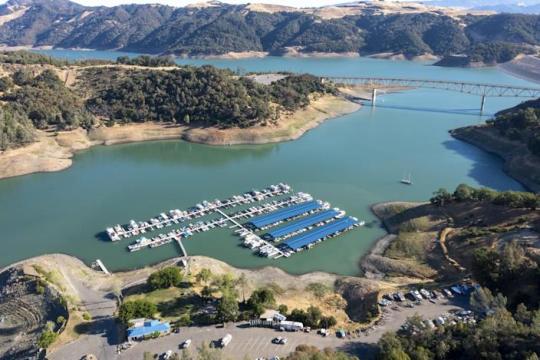

The water level has been steadily receding at Lake Sonoma in Geyserville, Calif. (Brian van der Brug / Los Angeles Times)
“There is an intelligence in their ability to adapt,” he said. “It gives me some sense of hope.”
Some vines on his property date to 1945. Sussman said they sustain his faith that seasons will pass and the vineyards will continue.
“I’m not blasé about climate change,” he said. “But I’m not watching all of this from high above. I’m down on the ground right in the thick of it, day by day making decisions about sustainability.”
Nine miles south of Healdsburg, another group of pleasure seekers had paddled down the river.
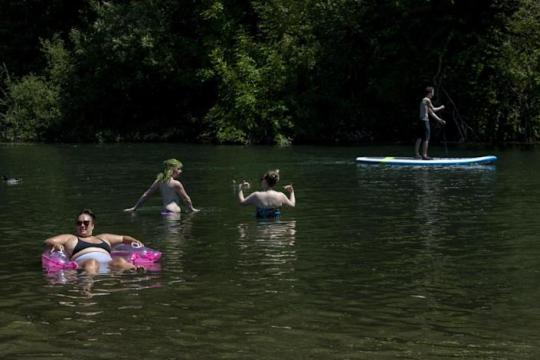

Beachgoers enjoy the cool water at Monte Rio Beach on the Russian River in Monte Rio, Calif. (Brian van der Brug / Los Angeles Times)
Mathew Knobel, 19, who works for Laba, was waiting to greet them at the end of their trip with hoots and hollers.
He tried to be supportive when they were visibly stunned by how low the river was, how there were spots where they had to get out of their boats and walk.
“People get really emotional when they see it for themselves,” Knobel said. “It’s almost shock and awe.”
It’s not a reaction he shares.
“To be very honest, in my lifetime, I haven’t been able to experience anything different,” he said. “I’m 19. By the time I was old enough to have a consciousness about climate change, it was here.
“It’s not that I’m not concerned,” he added.
“But to me, drought, fires and floods are what’s normal.”
This story originally appeared in Los Angeles Times.
Source link
0 notes
Link
Bodega Bay is a town and census-designated place (CDP) in Sonoma County, California, United States. The population was 1,077 at the 2010 census. The town, located along State Route 1, is on the eastern side of Bodega Harbor, an inlet of Bodega Bay on the Pacific coast.
History
Bodega Bay is the site of the first Russian structures built in California, which were erected in 1809 by Commerce Counseller Ivan Alexandrovich Kuskov of the Russian-American Company in the lead-up to the establishment of Fort Ross. The Russians named the settlement in Bodega Bay Port Rumyantsev after the Russian Foreign Minister Nikolai Petrovich Rumyantsev, and it served as a port to support Fort Ross and the larger Russian community known as Colony Ross.[5][6]
The location scenes in the Alfred Hitchcock-directed film The Birds (1963) were filmed in both Bodega Bay and nearby Bodega (though both were represented as being parts of the movie's Bodega Bay.) The town markets itself by using the film in many ways, including its Birds-themed visitors' center, although none of the film's primary locations are found there. The church and schoolhouse shown in the film are located on Bodega Hwy in Bodega.[7] The town also featured in the cult horror movie Puppet Master (1989).
PG+E wanted to build a nuclear power plant on Bodega Head in the 1960s, but the plans were shut down after a large protest (the first for environmental reasons) and the fault, which they found while they were digging the hole for the first reactor. The hole filled with water and became known as "The Hole in the Head".
Film locations
Bodega Bay has served as a location for several major films:[20][21][22]
The Birds (1963) Except for a short sequence at the beginning filmed in San Francisco, most of the film's exterior scenes were filmed around the two towns of Bodega (a small inland village) and Bodega Bay (a larger village on the bay). Special sites used for shooting included Potter School, the Bay, the two towns which were made to appear as one, and the home and barn across the bay from the town of Bodega Bay.
The Russians Are Coming, the Russians Are Coming (1966) Some scenes filmed in Bodega Bay.
The Pack (1977) Filmed around Bodega Bay.
The Fog (1980)
The Goonies (1985) Some scenes filmed along the Sonoma Coast, Bodega Bay (and Astoria OR, and Cannon Beach OR).
Puppet Master (1989) Setting is Bodega Bay for the first two, fourth and fifth films.
Sleepwalkers (1992) Opening scene filmed in Bodega Bay.
Hart to Hart: Home Is Where the Hart Is (1994 TV Movie) Exterior scenes of the town.
I Know What You Did Last Summer (1997) Scenes around the road accident.
0 notes
Text
Fort Ross 2017 annual historical cultural festival
Fort Ross 2017 annual historical cultural festival
Fort Ross settlement was founded in the XIX century by Ivan Kuskov from Tot’ma, Vologodskoy region of Russia. From 1808 to 1812, the settlement was not just part of the Russian American Fur Company, but home to the Russians, but to Kashia native Indians, the Alaska natives (Aleuts) and California ranch era people. Fort Ross is currently a California State Park and a national historical monument.…
View On WordPress
0 notes
Photo
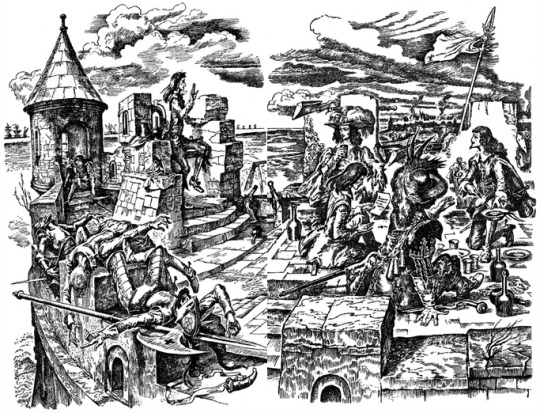

Ivan Kuskov’s illustrations for The Three Musketeers by Alexandre Dumas.
33 notes
·
View notes
Photo

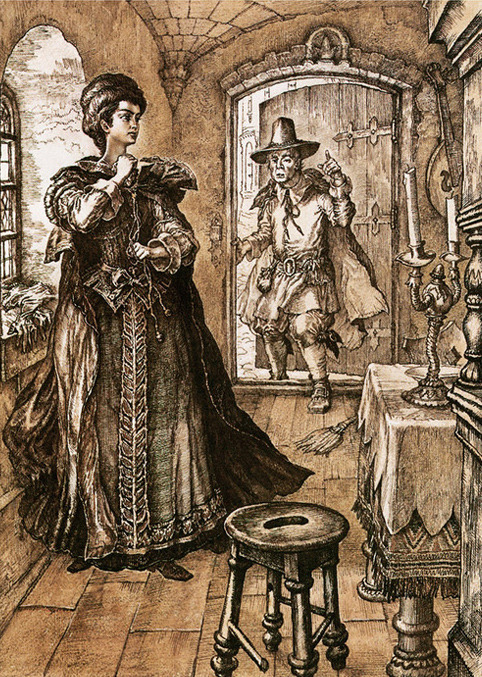


Ivan Kuskov’s illustrations for The Three Musketeers by Alexandre Dumas.
#Alexandre Dumas#three musketeers#the three musketeers#french literature#ivan kuskov#monochrome#d'artagnan#athos
21 notes
·
View notes
Photo
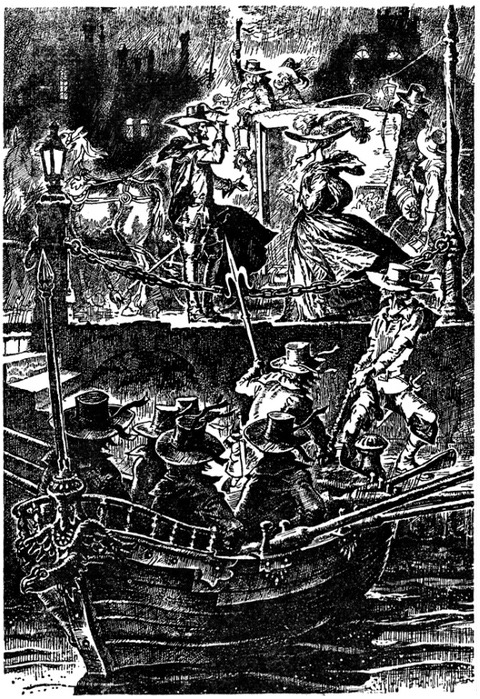

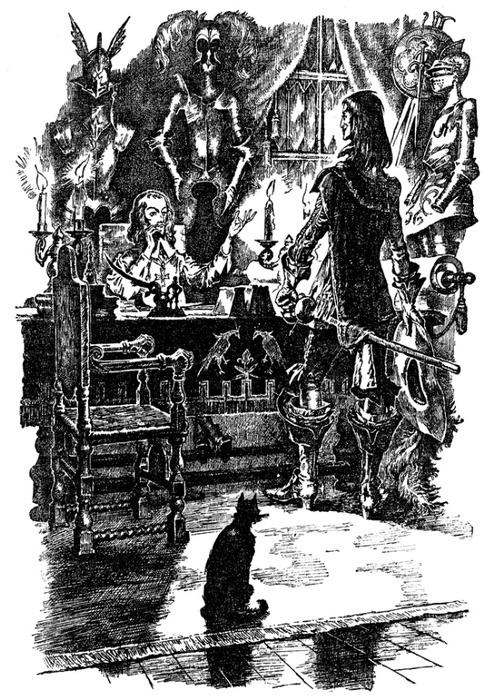

Ivan Kuskov’s illustrations for The Three Musketeers by Alexandre Dumas.
5 notes
·
View notes
Photo

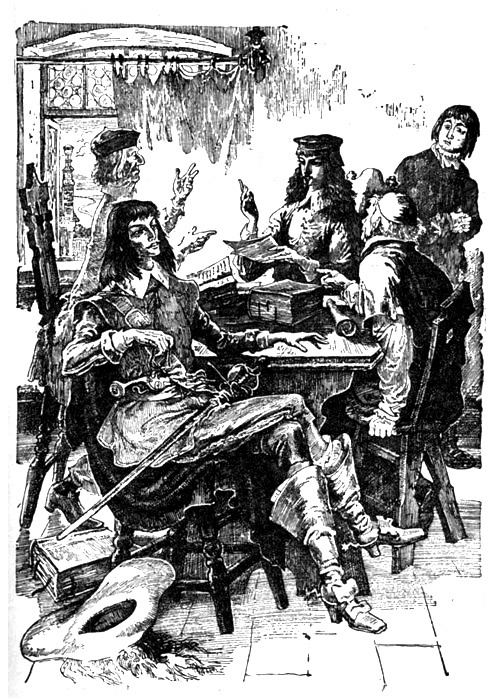


Ivan Kuskov’s illustrations for The Three Musketeers by Alexandre Dumas.
5 notes
·
View notes
Photo


Ivan Kuskov’s illustrations for The Three Musketeers by Alexandre Dumas.
5 notes
·
View notes